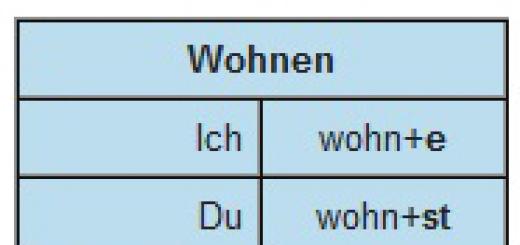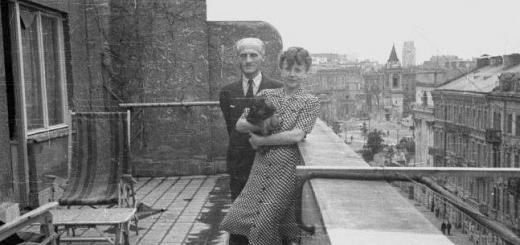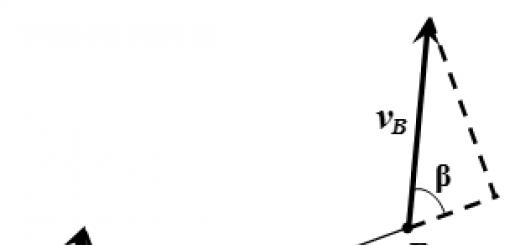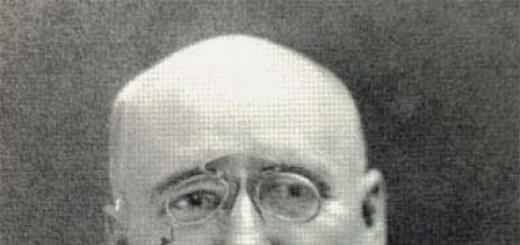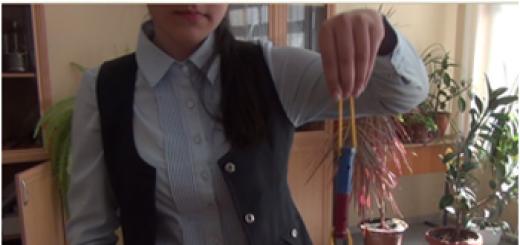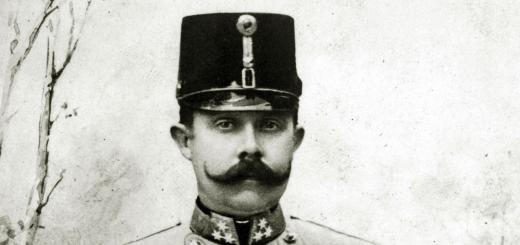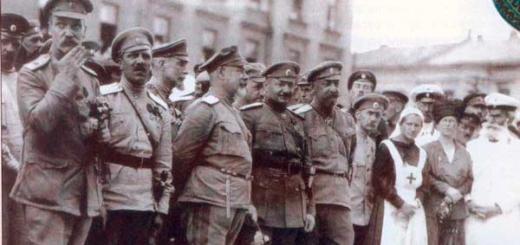Preview:
Kozarenko E.S., teacher
GBDOU kindergarten No. 53, Kolpinsky district
St. Petersburg
Algorithm for preparing a GCD outline in accordance with the Federal State Educational Standard for Educational Education
Some teachers have difficulty preparing GCD notes. Let's remember how this is done. Let's start with the title page.
The full name of the preschool institution is indicated at the top of the title page. Approximately in the middle of the sheet there is an inscription: Synopsis of direct educational activities in (Area) on the topic: “………………..” for children of senior preschool age.
Below the title of the abstract, on the right, the surname, initials of the author and his position, group number are indicated.
At the bottom of the title page, in the middle, the city is written, and even lower, the year when the summary was written.
The next sheet begins with the gcd goal. What is a goal?
Target – this is the end result, what we strive for. It is recommended that the goal be determined by a noun from a verb: creating conditions, forming, educating, strengthening, etc.
And tasks should be formed by verbs in an indefinite form: create, strengthen, educate, implement, etc..
The purpose and objectives of the lesson replace the program content.
Draw your attentionto an interesting nuance: many teachers write the word “educational” instead of the word “educational”, meaning only educational tasks. But the concept"education" (read the law “On Education in the Russian Federation”)includes both training and education. This means that educational tasks will include both teaching and educational together . In this case, you will have 2 groups of tasks:developmental and educational.
Task - something that requires execution, decision. Tasks in relation to the goal are and are:
1. Educational tasks (it is written what we will teach children in this lesson).Do not write the verb “teach” in the tasks! It is more correct to write “to promote”, “to form skills”, “to create conditions”, “to develop”, etc.
2. Developmental tasks (it is written that we will consolidate, clarify, not forgetting the development of mental functions and various properties).
3. Educators tasks (what mental, aesthetic, moral and volitional qualities will be formed in this lesson).
It should be remembered that each new task is written on a new line.
When the tasks are formulated, it is necessary to indicate what was carried outpreliminary workwith children, the entire scope of frontal and individual work with children (Conversations with children, observation, reading fiction, where we went on an excursion, what we learned, etc.)
Forms are indicated organizations collective activities (work in subgroups, in pairs, joint activities of the teacher with children) and independent activities of children (if planned).
Methods and techniques: Game, visual, practical activities for children, questions for children, verbal, didactic games, use of fiction, vocabulary work or activation of the dictionary; individual work; differentiated approach, parental participation in educational activities (if applicable).
Materials and equipment:it lists what equipment will be used on this GCD (for example: tape recorder, flannelograph, easel, wall board, cubes, stands, etc.).
Next, the demonstration material is indicated, which lists not only all the manuals and paintings, but also their authors, quantity, and sizes.
When describing handouts, it is necessary to list what material is taken, indicating the size and quantity.
The following describes the structure and methodological techniques used in the lesson. The parts of the lesson and specific methodological techniques are indicated. For example:
I. Introductory part - 3 minutes.
a) reading the poem “Autumn” by A.S. Pushkin;
b) watching the autumn sky from the window;
c) verbal didactic game “Come up with a word” (selection of adjectives for the words sky, autumn, foliage).
II. Main part- 15 minutes.
a) conversation about weather phenomena in autumn;
b) looking at weather calendars;
c) physical minute;
d) writing stories about autumn weather;
e) children naming autumn signs and sayings about autumn;
f) didactic game “Which tree is the leaf from”... etc.
III. Final part(reflective stage)- 2 minutes.
a) generalization by the teacher;
b) GCD analysis (about what knowledge the children showed).
And finally, a description of the progress of the GCD begins.
The GCD move is written in direct speech. Be sure to write down all the words that the teacher will say, the expected answers of the children, and the teacher’s generalizations. If during the lesson the teacher needs to perform some actions, this is indicated in the notes.
For example:
GCD move:
1. Reading the poem “Autumn” by A.S. Pushkin;
Educator: “Children, would you like me to read you a poem by A.S. Pushkin's "Autumn"?
Children: “Yes, we want!”
Educator: " October It’s already arrived - the grove is already shaking off
The last leaves from their naked branches;
The autumn chill has blown in - the road is freezing..."
So further on all points of the GCD structure.
So, if we briefly describe all of the above, the structure of the GCD summary is as follows:
If there is a title page, then the second page begins with Goals, if without a title page, it looks like this:
Topic: “Snowflakes outside the window”(Times New Roman 16)
(Medium group No. 1, Ivanov I.I.)(Times New Roman 14)
Educational area: Artistic and aesthetic development
Target:
Tasks:
Educational:
Educational:
Educational:
Preliminary work:
Methods and techniques:
Materials and equipment:
GCD structure:
I. Introductory part:
II. Main part:
III. Final part:
GCD move:
A good, useful lesson cannot be taught without preparation. That's why it's so important to think through his move in advance. The Federal State Standard for Basic General Education emphasizes that the educational process must be organized so that students can achieve general cultural, personal and cognitive results. Therefore, there are several general requirements for how to create a lesson plan.
What is a lesson summary?
Every competent teacher, before teaching a lesson, draws up a lesson plan. What does this term mean? Since student times, everyone has become accustomed to the fact that a summary is the information that has just been listened to in writing. In the teaching world, everything is different. The outline (or in other words, the lesson plan) is drawn up in advance and serves as a kind of support, a hint for the teacher. This is information collected together about what the lesson is about, how it is structured, what meaning it carries, what its purpose is, and how this goal is achieved.
Why do you need to create a lesson plan?
First of all, the teacher needs a lesson plan. This is especially true for young teachers who, due to lack of experience, may get confused, forget something or not take into account. Of course, if it is carefully thought out in advance how to present information to students, what exercises to consolidate it, and practice it, then the process of assimilation will go much faster and better.
Often, lesson notes are required to be presented to the head teacher, because this is a direct reflection of how the teacher works, how the teaching methodology corresponds to school requirements and the curriculum. The teacher's strengths, as well as his methodological errors and shortcomings, are clearly visible from the notes.
Primary requirements
It is difficult to come up with general requirements that all lesson plans must meet. After all, a lot depends on the children, their age, level of development, type of lesson and, of course, the subject itself. The Russian language lesson plan will be fundamentally different from the lesson plan, for example, on the world around us. Therefore, there is no single unification in pedagogy. But there are several general requirements for what a lesson plan should look like:

What else is worth paying attention to?
As a rule, when creating a lesson plan, a teacher needs to think through every little detail. Up to how much time will be spent on implementing each of the points of the plan. It is necessary to write down all the remarks said by the teacher and give the expected answers of the students to them. All the questions that the teacher is going to ask should also be clearly stated. It would be a good idea to separately indicate what equipment you are supposed to work with during the lesson. If some kind of handouts are used during the lesson or the teacher shows a presentation, pictures, etc. for clarity, all this should also be attached to the lesson notes in printed and electronic form. The summary should end with a summary and homework.
How to properly prepare an outline?
The teacher can draw up a plan for himself in any form. This could be simple notes, individual lines, sentences, or a detailed script. Some diagrammatically depict the necessary information. If you need to submit your notes for review by your superiors, the most common form is in the form of a table. It is very convenient and visual.

An example of drawing up a short outline
Brief lesson plan. 5th grade
Item: Russian language.
Subject: adjective.
Lesson type: combined.
The purpose of the lesson: introduce students to a new part of speech.
Main goals:
- develop speech skills and abilities;
- practice the ability to coordinate words.
Equipment: board, chalk, handouts, tables.
During the classes:
- Organizing time;
- checking homework;
- explanation of new material (reading the rules, working with them, doing exercises to consolidate the material);
- repetition of studied material;
- summing up the lesson, assessing students' knowledge;
- homework.
Please note that all points of the lesson must be described in detail by the teacher, down to each remark. In addition, opposite each item you need to write the maximum time that will be allotted for each of them. This way, the situation will not arise that the lesson is coming to an end, and only half of what the teacher planned has been done.

Not all notes will be the same. The age of the students is very important when we talk about lesson plans. 6th grade, for example, can perceive new information in a standard form. This is when the teacher explains the rule, writes down important materials on the board, and then offers a series of activities to practice and consolidate what has been learned. For grade 2, this option will be ineffective. For children, it is customary to introduce new things in a playful way or with the help of visual materials.
Let's give an example of another summary.
English lesson plan, 7th grade
Subject: repetition of the grammatical material covered.
Lesson type: combined.
The purpose of the lesson: consolidate acquired skills on the topic of translating sentences from direct speech to indirect speech.
Main goals:
- develop communication skills;
- develop the ability to work in a team;
- develop the ability to highlight the main thing in the studied material.
Equipment: blackboard, chalk, presentation, tape recorder.

During the classes:
- Organizing time;
- phonetic warm-up;
- lexical warm-up;
- repetition of the material covered (exercises, independent work, team work);
- checking homework;
- summing up the lesson;
- homework.
As can be seen from this example, the points of the lesson plan do not have a clear location. A standard homework check can be carried out at the beginning of the lesson, in the middle, or even at the end of the lesson. The main thing for a teacher is not to be afraid to experiment, invent and bring something new into each lesson, so that the lesson is interesting and special for the children. So that they look forward to it. Depending on which type is chosen, the lesson plan will depend. 7th grade (unlike, for example, younger schoolchildren) allows you to structure a lesson in a non-standard way. Repetition of what has been learned can be carried out in the form of a game or competition. You can give students the opportunity to show their skills through independent work. The main thing is to understand what type of activity is suitable for a specific class, a specific group of students (you need to take into account both age and overall performance in the class).
Summing up
So, let's summarize all of the above. Step-by-step instructions for drawing up a lesson plan will look like this:

- Subject/class.
- Kind of a lesson.
- Topic of the lesson.
- Target.
- Main goals.
- Equipment.
- During the classes:
- organizational moment, warm-up, etc. (we begin to describe in detail the speech of the teacher and students);
- checking homework;
- introduction of new material, its development;
- consolidation of what has been learned, repetition.
8. Summing up.
The stages of the lesson can be arranged in any order, can be supplemented or presented selectively during the lesson.

Do not forget that, first of all, the notes are not needed by the authorities, not by the head teacher, not by the director and not by the students. It is a working tool and a teacher's assistant. And here it’s not a matter of experience or the ability to experiment on the spot. Nobody bothers you to bring something new and unique to the lesson. The teacher can joke, give an example from life (and, of course, this should not be written in the notes). But in any case, a lesson plan must be present. You got 8th grade, 3rd or 11th - it doesn’t matter! The class is active or passive, grasps it “on the fly” or requires long explanations - it doesn’t matter! Make it a rule - make a plan before each lesson. It definitely won’t be superfluous.
Anoshina Anna Aleksandrovna – Senior teacher of MBDOU TsRR d/s No. 4 “Semitsvetik”, Ivanteevka, Moscow region
Date of submission of work to the competition: 06/15/2017.
The structure of writing a GCD summary in a preschool educational institution according to the Federal State Educational Standard.
With the introduction of the Federal State Educational Standard, the approach to organizing and conducting direct educational activities with children is changing. There is a rejection of traditional classes built in the logic of the educational model. The lesson is understood as an exciting activity with children, during which the teacher solves program problems. The role of the teacher is being rethought, becoming more of a “coordinator” or “mentor” than a direct source of information. The position of a preschool teacher in relation to children changes and takes on the nature of cooperation when the child acts as an equal partner in a situation of joint activity and communication with the teacher.
Many teachers do not pay attention to the design of notes. The topic, purpose, and objectives are written in the notes. And often tasks pass through the goal.
Let's remember how this is done.
Let's start with the title page.
The full name of the preschool institution is indicated at the top of the title page. Approximately in the middle of the sheet there is an inscription:
Abstract
Direct educational activities in (Region)
On the topic of: "……………"
for older children.
Below the title of the abstract, the author's surname and position are indicated on the right.
At the end of the title page, in the middle, your locality is written, and even lower, the year when the summary was written.
The next sheet begins with program content. This includes the purpose and objectives of the GCD.
What is a goal?The goal is the end result, what we strive for. The goal is achieved through tasks, which in relation to the goal are means, i.e. how we will achieve this goal. It is recommended that the goal be determined by a noun from a verb: creating conditions, forming, educating, strengthening, etc.
Goal setting algorithm.
- Assess the existing problems and identify the main one, clearly formulate it.
- Determine the steps (actions) to solve it and their sequence.
- Formulate exactly the intermediate result (effect) from the execution of each step (action).
- Evaluate which (and how many) of these steps (actions) can be carried out within the framework of one GCD.
- Formulate the goal of the GCD, which contains a description of the effect of the actions that you plan to carry out within the framework of one GCD.
What an adult proposes to do must be necessary and interesting for the child, and the meaningfulness for the child of the activity proposed by the adult is the main guarantee of the developmental effect.
Task- something that requires execution, decision. Tasks in relation to the goal are and are:
Educational;
Developmental;
Educating.
It is recommended to formulate tasks with a verb in an indefinite form: consolidate, generalize, form, develop, educate, etc. Maintain clarity and specificity in the formulation of tasks (not just expand (consolidate) ideas about winter, but what exactly children learn (reinforce) about winter within the framework of this lesson). This also applies to the formulation of developmental tasks: not just the development of children’s mental abilities, but which ones specifically (list).
It should be remembered that each new task is written on a new line. When the tasks are formulated, it is necessary to indicate what equipment will be used on this GCD (for example: tape recorder, board, easel, wall board, cubes, stands, etc.).
Describing Handout, It is necessary to list what material is taken, indicating the size and quantity.
Next you need to describe previous work as a teacher in preparation for the lesson: what you designed, what you made, what you compiled, studied, wrote, etc.
After this, preliminary work with children is indicated, the entire scope of frontal and individual work with children (where they went on an excursion, what object they observed, what they read to the children, what they learned, etc.)
After this it is written which individual work, with whom (indicate the names and surnames of the children) in what part of the lesson it is planned to take place. It is advisable not to forget to include this work in the part of the lesson in the notes in which you planned.
The notes also indicate vocabulary work - these are new words, the meaning of which must be explained to the children.
The parts of the lesson and specific methodological techniques are indicated.
For example:
I. Introductory part - 3 minutes.
a) reading the poem “Autumn” by A.S. Pushkin;
b) watching the autumn sky from the window;
c) verbal didactic game “Come up with a word” (selection of adjectives for the words sky, autumn, foliage).
II. The main part is 15 minutes.
a) conversation about weather phenomena in autumn;
b) looking at weather calendars;
c) children naming autumn signs;
d) writing stories about autumn weather;
e) children naming sayings about autumn;
d) didactic game “Which tree is the leaf from”... etc.
III. The final part is 2 minutes.
a) reading a story about autumn;
b) listening to a recording by P.I. Tchaikovsky "September";
c) generalization by the teacher;
e) analysis of the lesson (what knowledge the children showed).
The following describes organization of children in direct educational activities.
The placement of tables, equipment, seating and placement of children is indicated - if necessary, a placement plan is included. If the placement of children in different parts of the lesson changes, describe how the transition from one part of the lesson to another is carried out.
And finally, a description of the course of the lesson begins. The course of the lesson is written in direct speech. Be sure to write down all the words that the teacher will say, the expected answers of the children, and the teacher’s generalizations. If during the lesson the teacher needs to perform some actions, this is indicated in the notes.
For example:
Educator: “Children, what season did the artist depict in his painting?”
Children: “The picture shows autumn”
Educator: “That’s right, the painting depicts an autumn landscape. The artist conveys the beauty of autumn nature with colors, the writer and poet - with words, epithets, and the composer with music. Listen to an excerpt from P. I. Tchaikovsky’s work “September” (I turn on the tape recorder).
That is, after direct speech, in the middle of the line, the teacher’s actions are indicated in brackets (“turning on”, “hanging out”, “cleaning up”, etc.).
The lesson ends with words of analysis.
So, if we briefly describe all of the above, then outline structure
, as follows:
1. Type, type, topic of GCD indicating the age group of children.
2. Program content (training, developmental, educational tasks).
3. Vocabulary work.
4. Class equipment.
5. Demonstration material.
6. Handouts.
7. Previous work of the teacher in preparation for the lesson.
8. Preliminary work with children (with the whole group, with a subgroup, individually).
9. Individual work with children using educational activities (what kind, with whom, in which part of the lesson).
10. Lesson structure and methodological techniques.
11. Organization of children in the classroom.
12. Progress of the lesson (in direct speech). At the end there are final phrases or analysis of the lesson.
We remind you about the types of classes:
1. Classes on communicating new knowledge.
2. Classes to consolidate knowledge, skills and abilities.
3. Lessons on generalization and systematization.
4. Final.
5.Accounting and verification.
6. Combined (mixed, combined).
7. Complex.
8. Integrated (based on the principle of combining several types of children's activities and different means of speech development). Integration can be on a thematic basis.
For example:
1) reading about birds;
2) collective drawing of birds;
3) storytelling based on pictures.
Additional Information
Do not forget about the methodological support of the pedagogical process. Any activity begins with a motive. Motive is a reason that encourages action. Previously, we called a motive a moment of interest before a lesson.
The following motives for activities for children are distinguished:
Gaming. A child can realize his need for significance by “helping” various toys solve their practical and intellectual problems.
Motivation for communication. Motivation is based on the child’s desire to feel necessary and important in helping an adult. An adult turns to a child with a request to help him, he says that there is no way to do without the child’s help. At the same time, he does not forget to thank the child.
Self-interest motivation. This motivation encourages the child to create various objects for his own consumption.
After motivation comes the methodology for conducting the lesson. This section should highlight the parts of the lesson. Children's answers are not written in notes.
Dubovikova Natalya Vyacheslavovna
MBDOU No. 170, deputy head for educational and methodological work, Izhevsk
Memo in preparation of writing a summary of direct educational activitiesat preschool educational institution
When writing notes, the teacher must:
*formulate the goals and objectives of the GCD and its individual stages,
*reveal the structure and subject content of the GCD,
*demonstrate mastery of methods and techniques for motivating educational activities, organizing educational activities for students,
*illustrate with examples the consideration of the individual characteristics of the pupils and the specific characteristics of the group in which the ECD will be carried out.
The abstract assumes a reflection of the main stages of the GCD:
1. GCD topic;
2. organizational moment;
3. setting goals and objectives;
4. survey of students on the material covered;
5. explanation of new material;
6. consolidation of new material;
7. summing up.
Stages of work:
Introductory part: Organizing time, including: setting a goal that must be achieved by students at this stage of the GCD (what must be done for their further work to be effective); determining the goals and objectives that the teacher wants to achieve at this stage of the educational process; description of methods for organizing the work of students at the initial stage and topics of educational activities (taking into account the real characteristics of the group with which the teacher works).
Main part: Getting to know new material. Didactic game(game situation), creating motivation for activity. Children are offered a game during which they remember what will help them get acquainted with a new topic (updating knowledge and skills). The game should be such that during its course there are no difficulties in the child’s activities.
Difficulty in a game situation. At the end of the game, a situation should arise that causes difficulty in the children’s activities, which they record in speech (we don’t know this yet, we don’t know how...). The teacher encourages them to ask questions and, together with the children, determines the topic of the upcoming activity. As a result, the children conclude that it is necessary to think about how everyone can get out of a difficult situation together.
Discovering new knowledge or skill. The teacher, with the help of introductory dialogue based on the subject (game) activity of children, leads them to the discovery of new knowledge or skills. Having formalized something new in speech, children return to the situation that caused the difficulty and overcome it using a new way of activity (action).
Final part : Fixing the material. Reproducing something new in a typical situation. At this stage, games are played where children use new knowledge or skills. At the end, a game situation is created that records each child’s individual mastery of new material. The child self-assesses his activity in mastering new things.
Repetition and developmental tasks. Provided in notes at the request of the teacher.
Summing up the lesson; description of positive actions of students, determination of the prospects of the acquired knowledge (what new things have been learned, where new things will be useful).
Title page: The name of the preschool educational institution (in full, according to the charter), the topic of the educational activity, a summary of direct educational activities, compiled by: full name, city.
Educational area: social and communicative development;
Cognitive development;
Speech development;
Artistic and aesthetic development;
Physical development.
Integration of educational areas: cognitive development and speech development;
Type: integrated
Children's age:
Forms of direct educational activities: Team work.
Forms of organization: group, subgroup.
Target: the end result is what we strive for.
Tasks: educational, developmental, educational
Dictionary of new words:(if there is)
Preliminary work:(if carried out)
Equipment and materials:(attributes, material)
Progress of direct educational activities (DEA)
A detailed summary is presented, which describes the activities of the teacher and children with the direct speech of the teacher and the expected answers of the children.
Date of:
Time:
Educator:
Used Books:
Program content: (didactic, developmental, educational tasks; content of the knowledge, skills, attitudes of children being formed)
Equipment: (demonstration and handouts)
Method of organizing children and place of teacher:
Progress of the lesson
Introductory part
Main part
Final part
Note
Features of the expanded summary:
Written in first person;
Direct speech predominates;
The following are indicated in brackets:
a) expected responses of children and their actions,
b) the actions of the teacher accompanying his words.
Clear, concise, clear formulations of tasks for children are given;
There are necessary generalizations and conclusions, logical transitions from one part to another.
Appendix 6 b.
Sample - diagram
Drawing up a plan - a synopsis of a physical education lesson
Physical education lesson summary
In... kindergarten group No....
Location:
Amount of children:
Program tasks: (tasks for the development of movements and physical qualities of children).
Equipment:
|
Struct. Part |
Physical exercise |
Dosage |
Organizational and methodological instructions |
Note |
|
1. (Introductory); 2. (Main); 3. (Conclude telny). |
Name of exercises, description of the content of physical exercises (motor actions performed) |
Execution time, number of repetitions. |
Guidelines regarding the organization of children, ensuring the correct execution of exercises, and preventing mistakes. The techniques used are indicated. There is direct speech from the teacher, an artistic word that accompanies the children’s movements. Schematic images of the method of arranging equipment, distributing benefits, and the direction of movement of children and the teacher can be used. |
To be completed after the lesson, difficulties encountered and necessary changes are noted. |
Note
When compiling morning exercise plan tasks and equipment are not indicated; all other design features are preserved.
Appendix 7
Features of the organization of regime processes
1. Scheme of chronometry of the daily routine
|
Regime moment |
Time allotted for it |
Actual time spent |
Note |
|
Morning reception | |||
|
Hygiene procedures | |||
|
Independent activity | |||
|
Packing for a walk | |||
|
Walk |
2. Questions for observation and analysis.
Age composition of the group (age boundaries).
Compliance of the compiled regime with the age of the children.
Fulfillment by the teacher of the basic methodological rules for conducting routine moments:
Does it give an orientation to a new type of activity, how long does it take, does it repeat it;
Does the principle of gradualism apply when organizing regime processes;
Does he use routine moments to solve the child’s development problems (speech, cultural and hygienic skills, basic movements, etc.)?
What techniques does the teacher use to develop certain skills and abilities? Give examples.
Do the techniques used by the teacher correspond to the age of the children and pedagogical requirements?
How is an individual approach to children carried out? Give examples.
How are responsibilities distributed between the teacher and his assistant?
Is the regime running? Indicate the nature and reasons for deviations, options for replacing operating conditions.
The emotional state of the children in the group during the observed period of time (mood, involvement in games and other activities, etc.)
